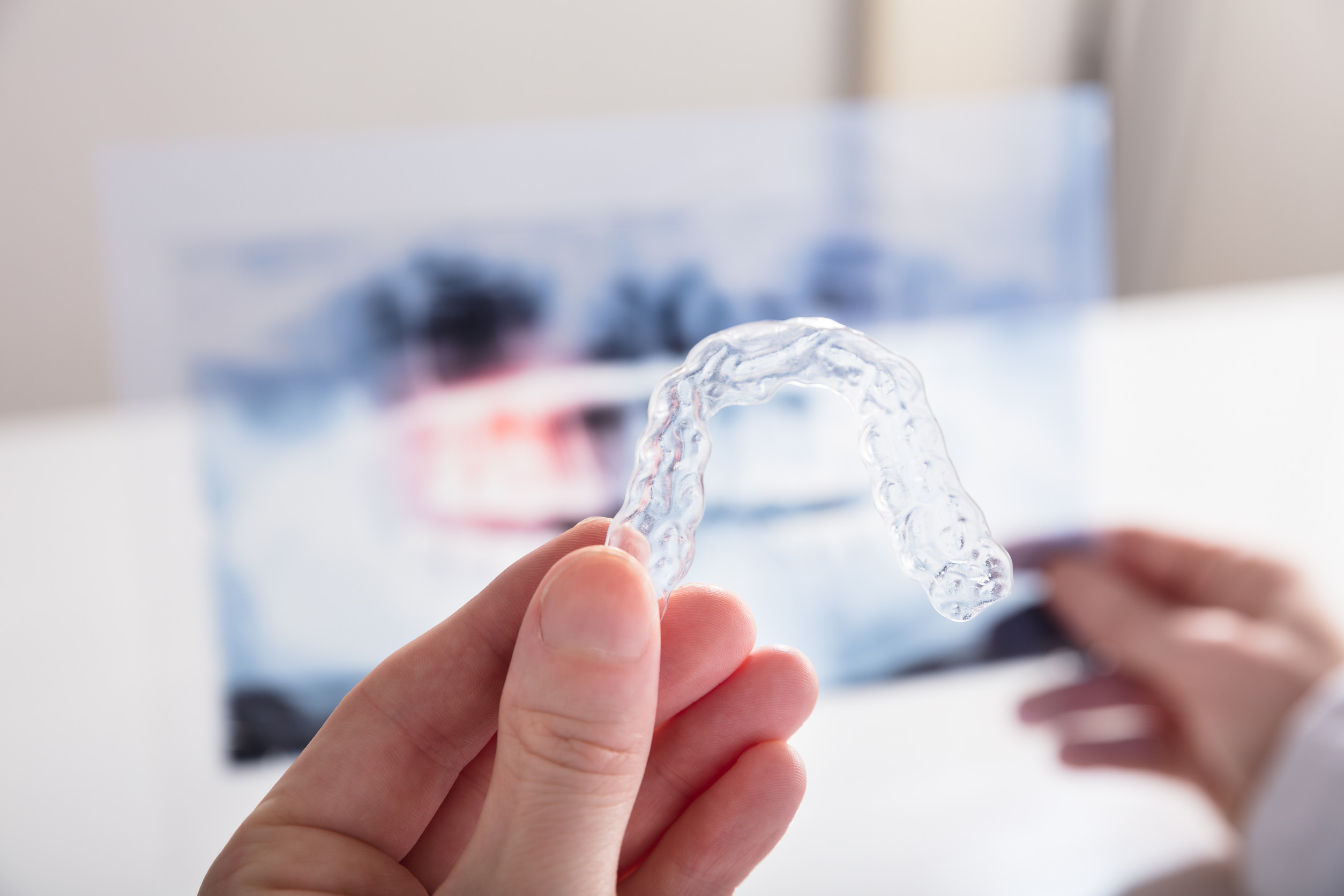In recent years, the orthodontic world has seen a surge in popularity around clear aligners—particularly DIY options marketed as a convenient and affordable way to straighten teeth at home. But are these at-home aligners really a match for professional treatment provided by licensed orthodontists? Before you commit to a mail-order aligner kit, it’s important to weigh the pros and cons of both paths.
This article will guide you through the differences between DIY clear aligners and professional treatment, helping you make an informed decision that supports both your smile and your long-term dental health.
What Are DIY Clear Aligners?
DIY (do-it-yourself) clear aligners are orthodontic trays typically purchased online. The process usually begins with a mail-in impression kit or an in-person scan at a retail location. From there, aligners are sent to your home, with minimal or no direct supervision from a licensed orthodontist. Brands that promote this model often advertise lower costs and fast turnaround times.
What Is Professional Clear Aligner Treatment?
In contrast, professional clear aligner treatment—like what we provide at East Tennessee Orthodontics—involves a board-certified orthodontist overseeing every aspect of the process. From precise 3D scans to routine in-office check-ins, your treatment plan is customized and supervised from start to finish. We offer industry-leading options like Invisalign and in-house aligners, designed to achieve optimal results safely.
Pros of DIY Clear Aligners
1. Lower Upfront Cost
One of the biggest draws of DIY aligners is affordability. With prices ranging from $1,800 to $2,500, they often cost less than professional treatment. For budget-conscious consumers, this can be appealing.
2. Convenience
DIY aligners can be managed from home with no visits to a physical clinic. The process is streamlined for those who don’t want to take time off work or travel for appointments.
3. Fast Start
Since impressions or scans are done at home or in a retail setting, the treatment can begin quickly—often within a few weeks of submitting your records.
Cons of DIY Clear Aligners
1. Lack of Supervision
The most serious drawback is the absence of ongoing care from an orthodontist. Without proper evaluation, tooth movement may be unsafe or ineffective. In fact, DIY aligners have been linked to complications like bite problems, gum recession, and tooth mobility.
Learn more about the risks of DIY aligner fixes and why professional care matters.
2. Limited Treatment Scope
DIY systems typically focus on cosmetic straightening—moving only the front teeth. If you have bite issues, crowding, or jaw misalignment, these systems may be insufficient or even harmful.
3. No X-Rays or Comprehensive Exams
Orthodontic treatment isn’t just about aesthetics; it’s also about function and health. DIY companies rarely offer X-rays or comprehensive dental evaluations, which are critical for identifying underlying problems like bone loss, cavities, or impacted teeth.
4. No Accountability or Local Support
If things go wrong, your only recourse is a customer service line. There’s no local expert to make real-time adjustments, troubleshoot complications, or provide reassurance when needed.
Pros of Professional Treatment with an Orthodontist
1. Personalized, Expert-Guided Care
Working with a licensed orthodontist ensures your treatment plan is custom-built based on precise diagnostics, including digital scans and X-rays. Adjustments are made in real time to improve effectiveness and avoid complications.
2. Comprehensive Treatment Capabilities
From correcting bite issues to aligning teeth in all quadrants of your mouth, professional treatment goes beyond just cosmetics. At East Tennessee Orthodontics, we treat everything from mild crowding to complex jaw misalignments.
3. Access to Multiple Aligner Options
You're not limited to one brand. Whether you’re a good fit for Invisalign, in-house aligners, or even traditional braces, an orthodontist can guide you to the best solution based on your goals and lifestyle.
4. Safety and Monitoring
Regular check-ins ensure your teeth are moving safely. If something feels off, your orthodontist can make immediate adjustments—avoiding long-term complications.
5. Better Long-Term Results
With professional treatment, your outcome is more predictable and often longer lasting. Retainers are custom-fit, and post-treatment maintenance is factored into your plan.
Cons of Professional Treatment
1. Higher Cost
Professional aligner treatment usually ranges between $3,000 and $6,000. However, flexible payment plans, insurance, and financing options can help offset the cost.
2. Time Commitment
You’ll need to attend appointments every 6–10 weeks, which can be a hurdle for those with busy schedules. But many clinics now offer virtual consultations and flexible scheduling.
Which One Should You Choose?
Ultimately, your choice should come down to more than price. Orthodontics is a healthcare decision, not a retail one. While DIY aligners may offer a quick and low-cost way to straighten front teeth, they carry serious risks if used without proper supervision.
If you're looking for safe, effective, and lasting results, we strongly recommend scheduling a consultation with a professional orthodontist. Our team at East Tennessee Orthodontics is here to guide you from your first visit through your final retainer.
Learn more about how clear aligners work and the importance of proper planning and care.
Final Thoughts: Your Smile Deserves Expert Care
Your smile is too important to trust to algorithms and mail-in molds. While DIY clear aligners may seem convenient, they often fall short in safety, personalization, and results. Choosing professional treatment means investing in your long-term oral health and confidence—backed by the expertise of a team that’s with you every step of the way.
Ready to explore clear aligners with expert care? Contact us today for a consultation and discover how we can help you transform your smile the right way.




